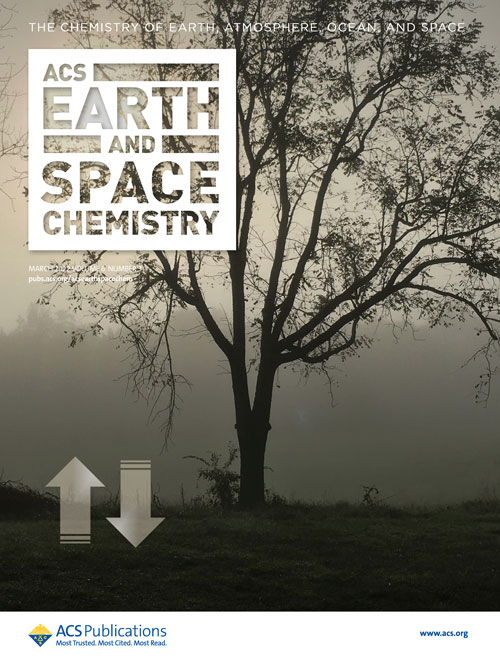Feeling fresh as the morning dew?
Rachel O’Brien has some news for you.
She’s found that the new day’s glistening condensation on foliage actually carries an impressive, complex and largely unpoetic variety of chemicals. O’Brien has even coined a collective noun to describe the organic-molecule mixture dissolved in dewdrops: biogrime.
O’Brien is an assistant professor in William & Mary’s Department of Chemistry. She is the lead author of “Molecular Insights into Dissolved Organic Matter in Natural Dew Water: Biogrime Films on Leaf Surfaces,” in ACS Earth and Space Chemistry. O’Brien specializes in the chemistry of aerosols in the atmosphere. She says she never set out to discover biogrime.

“I was actually approaching this from the standpoint of atmospheric chemistry, thinking about things that are condensing down into the dew water at night and then being released in the morning,” she explained. “I was thinking about the type of chemistry that would occur if you mixed sunlight and drying water and organic chemicals.”
Working with funding from the National Science Foundation, O’Brien enlisted Monica Dibley and Aron Jaffe, two members of the Class of 2022 who are co-authors on the paper. Dibley is the lead author; she was working toward her Honors thesis that she completed this spring. The team began sampling dew at six sites that included William & Mary’s Sunken Garden and Colonial Williamsburg. They focused on dewy grass and bushes.
“It’s rare to get a substantial amount of dew on trees,” O’Brien explained. “You can pull off a lot more dew from grass.”
Most previous studies have sampled dew or other precipitation freshly deposited under controlled conditions on clean surfaces such as Teflon. O’Brien found that it’s different out in the wild.
To find what nature actually puts in the morning dew, O’Brien and her student collaborators went out on dewy mornings armed with the lab instrument that bears the self-descriptive name of “scoopula” and a set of glass vials.
“And you take your scoopula and drag it across the grass and the water adheres to it,” she explained. “Emma Walhout, my first master’s student, actually developed the method we’re using. I had been using a glass rod, but the scoopula is much easier.”

The researchers pour each scoopula of dew water into a glass vial. Then the vials go back to the lab for filtering.
“We filter the samples to remove any bugs or debris, like little pieces of grass blade or whatever,” O’Brien said. “Then we usually freeze each sample and split it into pieces to do the different types of analyses.”
The analyses started with simple pH tests to determine acidity/alkalinity. On some samples, they concentrated on the organic compounds, using solid-phase extraction. Then they ran samples through the Orbitrap mass spectrometer in O’Brien’s lab. Other biogrime extractions went to the mass spectrometers of Old Dominion University.
They found around 9,600 different molecules in their biogrime samples take from just six locations. The team is especially interested in photolysis — the breakdown of molecules when exposed to light — and all samples demonstrated a tendency to photodecay rapidly. O’Brien said it was a surprisingly varied set of samples.

“A lot of what we do in my lab is surface-sampling,” she said. “And the complexity of the material that we find on different surfaces has been very surprising. The leaf surface looks relatively clean. But you know, it’s very surprising how much is there relative to what we had anticipated.”
Their work suggests that evaporating dew water may be a source for water-soluble gases. But it’s too early to tell what dew has to do with the overall aerosol chemistry of the atmosphere.
“In terms of my hypotheses going forward, I think maybe biogrime molecules are going to change the solubility of other organics,” O’Brien said. “So, maybe biogrime can help other things dissolve into the dew water. Or, depending on the molecules, you have chemical reactions that can occur, you could potentially have things trapped. There is going to be variability in terms of the types of chemicals that are coming back up off of leaf surfaces in the morning.”
Joseph McClain, Research Writer

